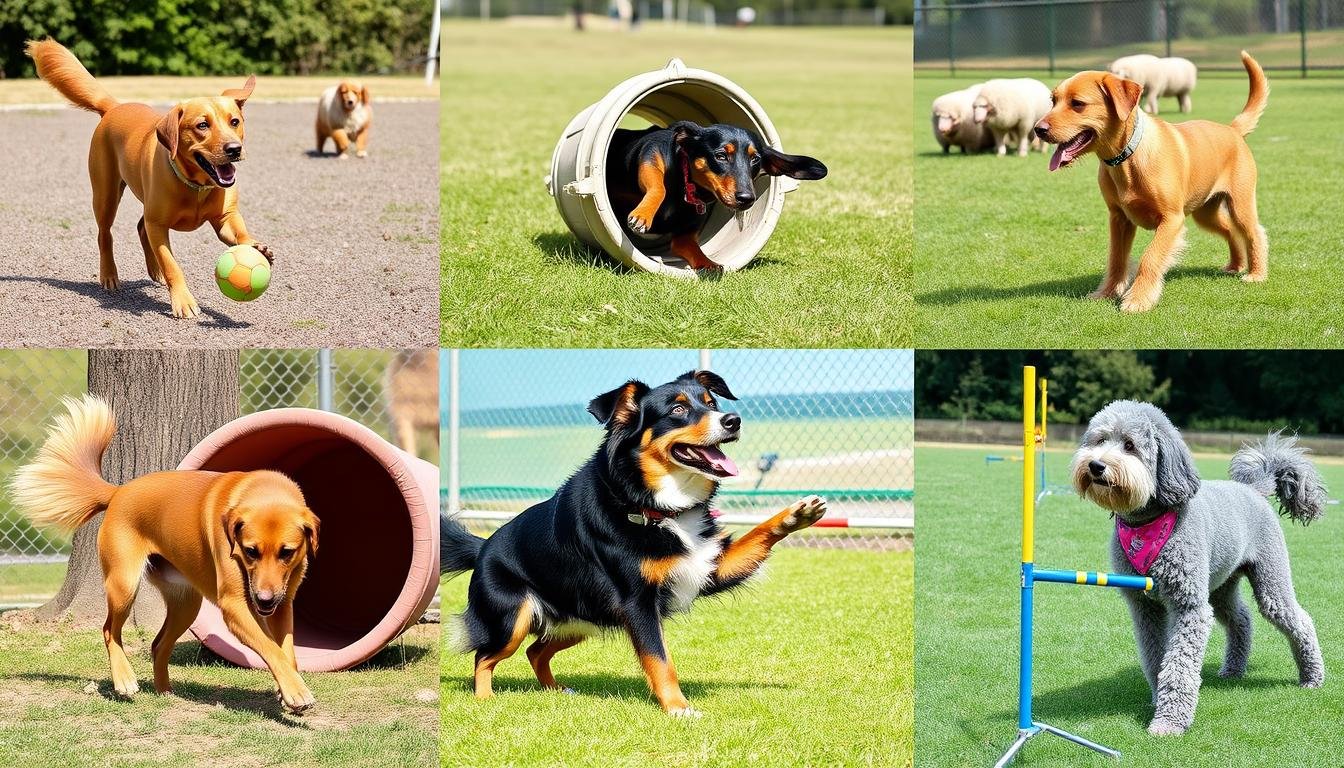Ever wondered why some dog training works for one breed but not another? It’s all about understanding your dog’s traits. Each breed has its own set of characteristics that affect how they learn and behave. By matching your training to your dog’s unique traits, you can build a strong bond and improve their behavior.
In this article, we’ll explore why knowing your dog’s breed traits is key. It helps make your training more effective and strengthens your bond with your dog.
Key Takeaways
- Breed-specific dog training enhances the relationship between you and your pet.
- Recognizing unique traits helps inform effective dog training techniques.
- Understanding dog traits includes behavior patterns, energy levels, and size.
- Effective training can lead to significant behavioral improvements.
- Tailoring your approach can maximize training success for your particular dog.
Understanding Breed-Specific Traits
Different dog characteristics greatly affect how each breed learns. For example, herding breeds like Border Collies are very smart and full of energy. They need lots of mental and physical challenges to stay happy and well-behaved.
Smaller breeds, on the other hand, need a different kind of training. They do best with clear rules and consistent practice. This helps them feel secure and well-trained.
Knowing what makes each breed unique can really help with training. It lets you use methods that fit their special needs. Dogs of different sizes have different strengths, too. Big dogs might be great at pulling carts, while small dogs are often better at quick, agile moves.
Using advice from breed experts can make your training plan better. It shows you care about your dog’s unique qualities. This not only makes training more fun for them but also strengthens your bond.
Quick Recommendation: This blog article contains tips for training your dogs. If you are looking for a more comprehensive training program, we strongly recommend K9 Training Institute.
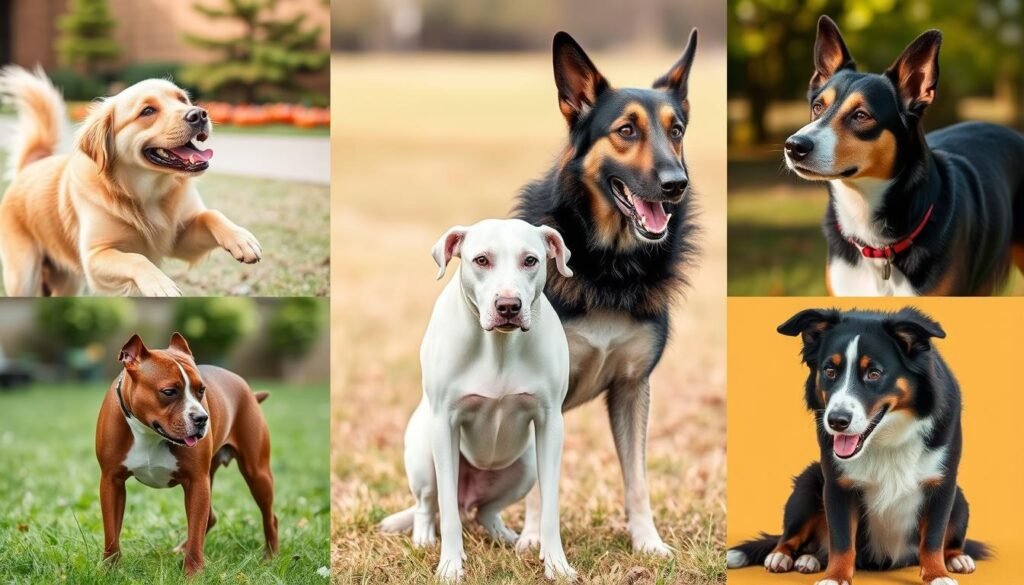
Dog Training: Why It Matters for Every Breed
Dog training is crucial for every breed. It helps you communicate better with your pet. A well-trained dog is obedient, making your home safer and more fun.
Training also leads to a more well-behaved dog. It prevents bad behaviors that can upset your home. This is especially true for breeds that might have specific needs.
Training strengthens your bond with your dog. It boosts their confidence and social skills. This makes going out more enjoyable for both of you.
Dogs that learn commands, from simple to complex, respond better. Studies show early training has lasting benefits. It makes dogs happier and better behaved for life.
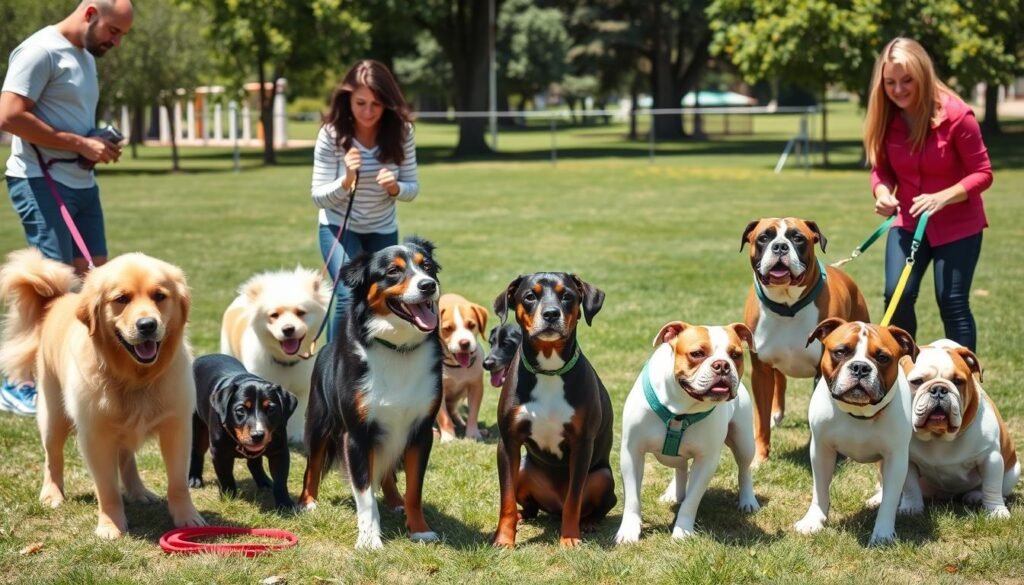
Adjusting Training Techniques Based on Size and Energy Levels
Training your dog needs a special approach based on size and energy. It’s important to use size-specific training to match the dog’s physical needs. For big dogs, you might need to use gentle methods but also find ways to control their strength.
Small dogs, on the other hand, do well in calm training settings. They need short, easy sessions to stay focused. Your goal is to build their confidence and teach good behavior with positive feedback.
High-energy dogs need more exercise in their training. Try activities like agility or interactive games to keep them busy. This mix of mental and physical challenges helps them stay focused and use their energy well.
Quick Recommendation: This blog article contains tips for training your dogs. If you are looking for a more comprehensive training program, we strongly recommend K9 Training Institute.
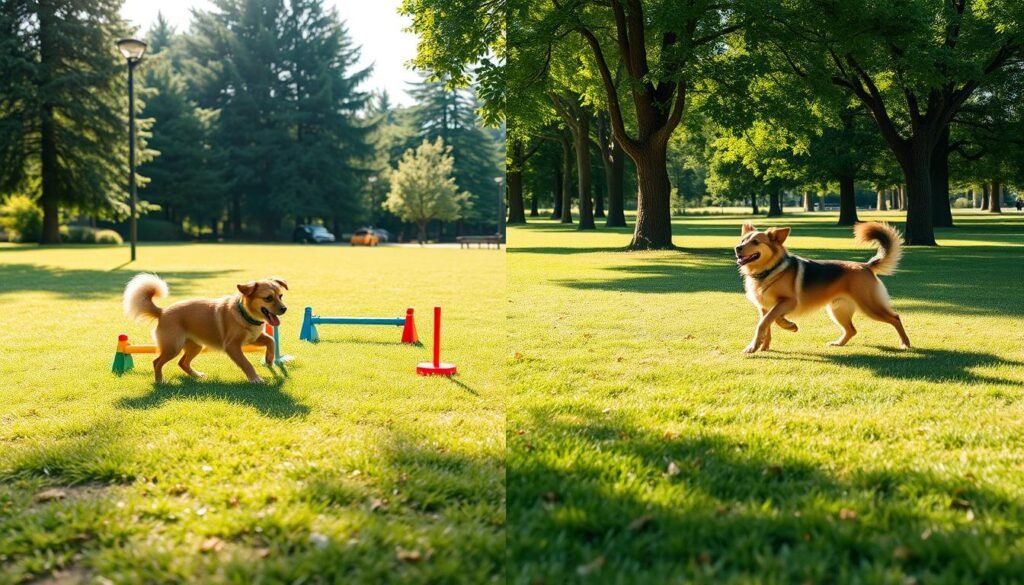
Behavioral Traits and Their Effect on Training
Understanding dog behavior is key to successful training. Each dog has its own traits, like aggression or fearfulness. These traits affect how they react to training.
By recognizing these traits, you can adjust your training. This makes it more effective for your dog’s needs.
Positive reinforcement is a great method for changing behavior. It rewards good actions, not bad ones. This encourages your dog to keep up the good work.
Regular training sessions help dogs learn and adapt better. They become more social and adaptable. Training with patience and consistency leads to lasting changes.
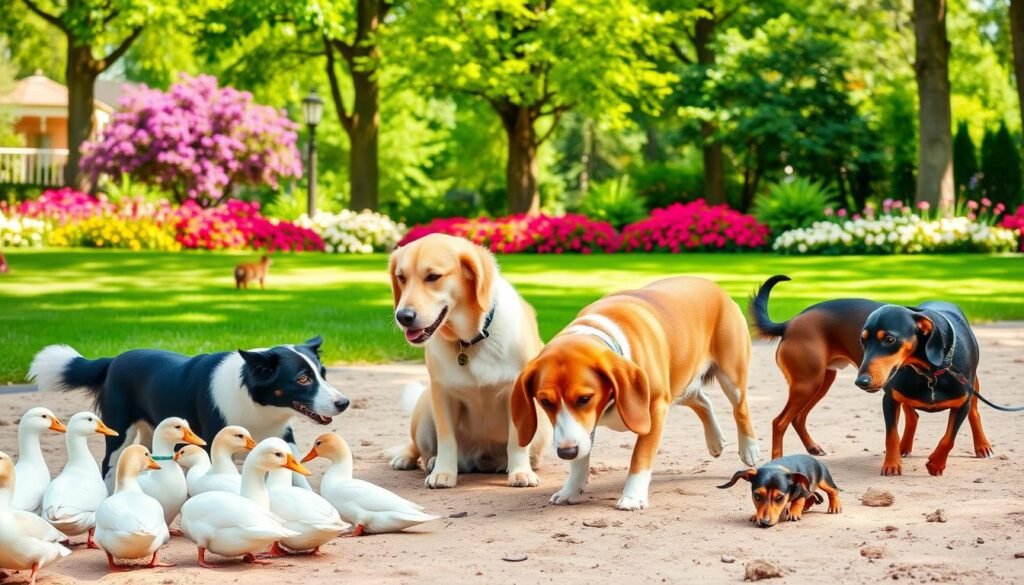
Incorporating Play and Socialization into Training
Adding play to dog training makes learning fun for your pet. Playful activities create a positive vibe, making training enjoyable. They also help teach important skills in a fun way.
Socialization is key, especially when your dog is young. Introducing them to different places, people, and dogs boosts confidence. It also helps reduce anxiety, making your dog well-adjusted.
Conclusion
Successful dog training depends on using techniques that match your dog’s breed. Understanding your dog’s unique traits helps you tailor training. This approach not only improves training but also deepens your bond with your pet.
Adjusting training to fit your dog’s size and energy is crucial. Dogs do best when training respects their natural behaviors. By focusing on their traits, you can improve their behavior and make training fun for both of you.
In summary, using these insights helps you train your dog effectively. It strengthens your relationship and helps your dog learn new behaviors. By adopting these strategies, you’ll see your dog’s training become a positive experience that brings you closer together.
Quick Recommendation: This blog article contains tips for training your dogs. If you are looking for a more comprehensive training program, we strongly recommend K9 Training Institute.

